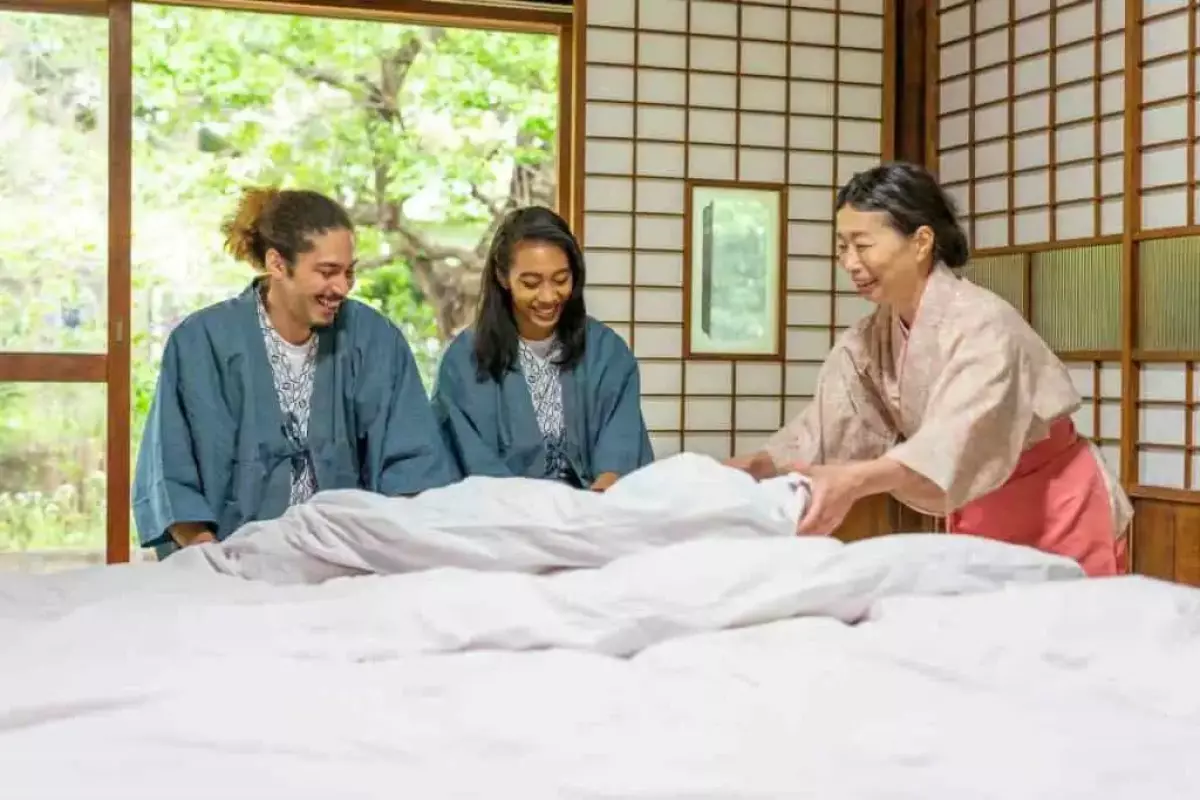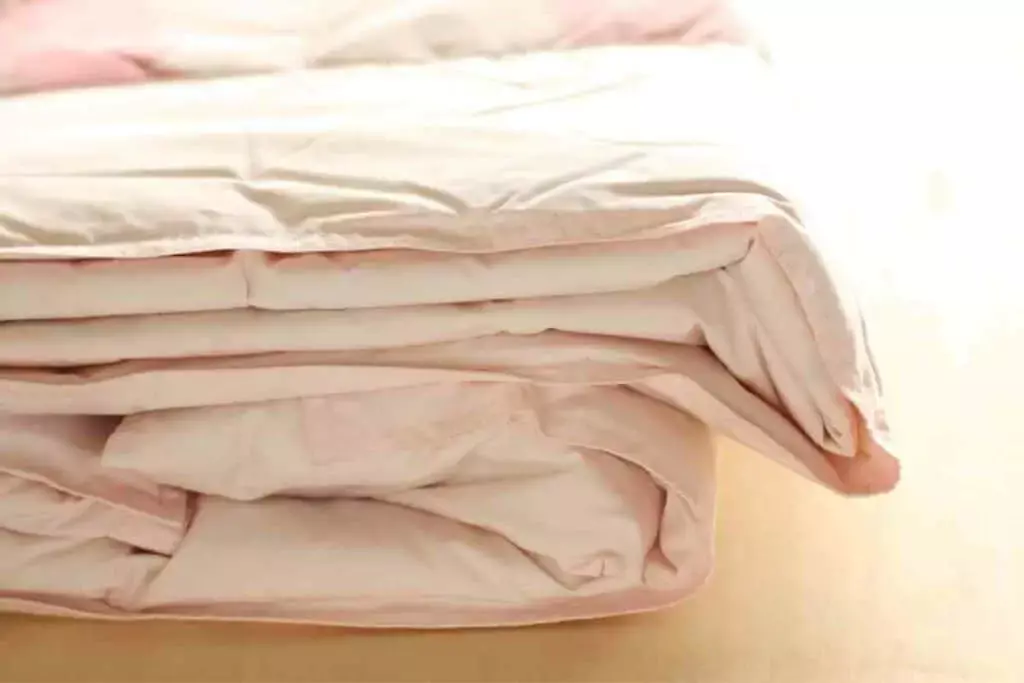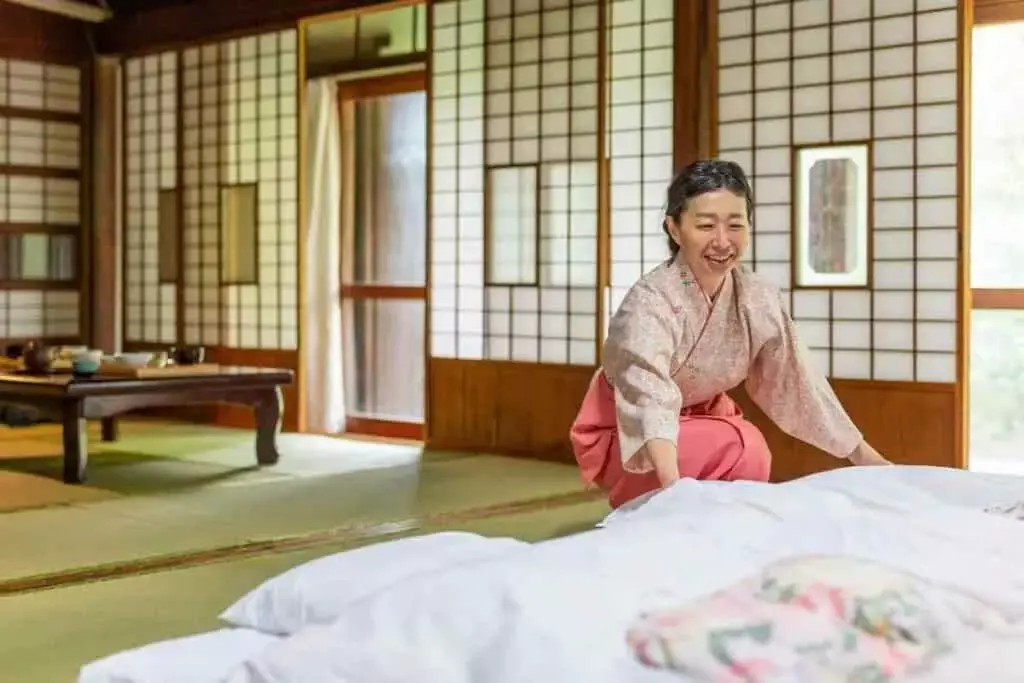If you ever find yourself inside a Japanese person's bedroom, don't be surprised if you don't see a traditional bed. The Japanese have a unique approach to sleeping arrangements that sets them apart from the Western world. While minimalist sleeping arrangements are gaining popularity worldwide, Japan has been practicing this lifestyle for centuries.
Sleeping basics in Japan
In Japan, the traditional way of sleeping involves sleeping on the floor. This practice has several advantages, including space-saving, cooler temperatures, and increased safety during earthquakes. The traditional Japanese bed consists of a combination of mats and cushions, with tatami mats covering the floor instead of carpets.
 Types of Japanese beds
Types of Japanese beds
On top of the tatami mats, you'll find a thin mattress called a Shikifuton and a duvet called a Kakefuton. The pillow is typically filled with buckwheat hulls, providing a unique sleeping experience.
Tatami Mats: Comfort and Tradition
Tatami mats, traditionally used for flooring, are now mainly used for sleeping. These mats were once a luxury only accessible to the nobility, but they spread into all homes in the late 17th century. Tatami mats not only make the floor more comfortable but also act as a moisture barrier and breathable layer between the floor and the mattress.
 Comfortable Tatami mat
Comfortable Tatami mat
The size of tatami mats varies depending on the region, with Kyoto, Nagoya, and Tokyo having their own measurements. These mats contribute to the overall aesthetics and functionality of the traditional Japanese sleeping arrangement.
Shikifuton: The Thin and Portable Mattress
A shikifuton is a thin mattress, usually around three to four inches thick, made from cotton. It is placed on top of the tatami mats when it's time to sleep and rolled away during the day. This allows the sleeping area to be used for other purposes. Many Japanese people hang out their shikifutons in the sun to prevent mildew or mold.
 The Shikifuton thin mattress
The Shikifuton thin mattress
Kakefuton: The Traditional Japanese Duvet
The kakefuton, also known as a kakebuton, is the traditional duvet used in Japan. It usually features a silk-fiber interior, providing even heat distribution. This duvet is hypoallergenic, as it creates an inhospitable environment for dust mites. Many kakefutons come with removable covers for easy washing and maintenance.
 The Kakefuton duvet
The Kakefuton duvet
Sobakawa: The Unique Japanese Pillow
The sobakawa, a pillow filled with buckwheat hulls, completes the traditional Japanese sleeping arrangement. The organic buckwheat hulls allow for optimal air circulation, keeping the surface cool. While the stuffing material cannot be washed, the outer case can be removed for cleaning.
 The Sobakawa
The Sobakawa
Why Choose a Japanese Bedroom?
Sleeping on a firm surface has numerous benefits, according to the Sleep Foundation. The Japanese sleeping arrangement offers a cooler temperature, relief from back pain, improved posture, circulation, and spinal alignment. It is also environmentally friendly, as the materials used are often natural and have minimal manufacturing processes.
 Japanese bedroom benefits
Japanese bedroom benefits
Other Types of Japanese Beds
While traditional futon beds are still prevalent in traditional inns called ryokan, many Japanese people have embraced modern sleeping options. Platform beds, characterized by their elegance and simplicity, are low to the ground and often made of wood or bamboo. These beds can accommodate traditional futons or Western-style mattresses.
 Japanese Platform Beds
Japanese Platform Beds
The popularity of Western-style beds and mattresses is also increasing in Japan. These beds come in different sizes, from single to king, providing a wide range of options for individuals and families.
 Ashitsuki beds
Ashitsuki beds
Final Thoughts
The traditional Japanese sleeping arrangement offers a unique and beneficial experience. While the popularity of Western-style beds is on the rise, the traditional futon beds continue to be appreciated for their space-saving nature, portability, and affordability. Japanese culture also embraces the concept of inemuri, allowing people to nap anywhere when they feel sleepy.
Japanese beds provide comfort, functionality, and a connection to tradition. Whether you opt for a traditional futon or a modern platform bed, sleeping in a Japanese-style bedroom offers a distinctive and enjoyable experience.
Also Read
- 7 Best Zen Bedroom Ideas On A Budget
- 7 Benefits Of Tatami Mats You Should Know
- 7 Best Japanese Sunscreen Products You Can Buy Online
- 5 Best Japanese Makeup Brushes for a Flawless Finish
- The Best Furoshiki Wrapping Cloths: Inspiration, Ideas & Cloths You Can Buy
- Cool Tenugui Towels (10 Best Ones with Bold Japanese designs)
- Japanese Yukata Ideas & Inspiration (20 Creative Ideas)









